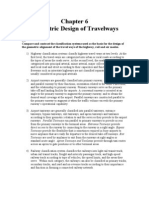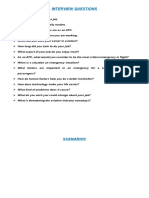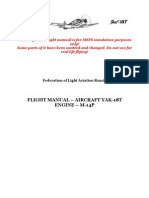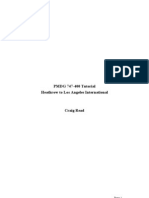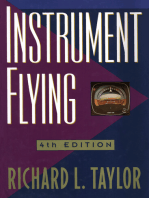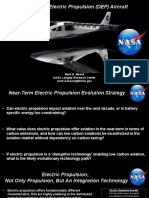0 ratings0% found this document useful (0 votes)
23 viewsCathay Pacific - From Cadet To Pilot
Cathay Pacific - From Cadet To Pilot
Uploaded by
jayjay769394jhijnkji, kij9njknkn , ijnknkljl, kkonklnl, ki ., h, njklakdn.
Copyright:
© All Rights Reserved
Available Formats
Download as DOCX, PDF, TXT or read online from Scribd
Cathay Pacific - From Cadet To Pilot
Cathay Pacific - From Cadet To Pilot
Uploaded by
jayjay7693940 ratings0% found this document useful (0 votes)
23 views12 pagesjhijnkji, kij9njknkn , ijnknkljl, kkonklnl, ki ., h, njklakdn.
Original Title
Cathay Pacific - From Cadet to Pilot
Copyright
© © All Rights Reserved
Available Formats
DOCX, PDF, TXT or read online from Scribd
Share this document
Did you find this document useful?
Is this content inappropriate?
jhijnkji, kij9njknkn , ijnknkljl, kkonklnl, ki ., h, njklakdn.
Copyright:
© All Rights Reserved
Available Formats
Download as DOCX, PDF, TXT or read online from Scribd
Download as docx, pdf, or txt
0 ratings0% found this document useful (0 votes)
23 views12 pagesCathay Pacific - From Cadet To Pilot
Cathay Pacific - From Cadet To Pilot
Uploaded by
jayjay769394jhijnkji, kij9njknkn , ijnknkljl, kkonklnl, ki ., h, njklakdn.
Copyright:
© All Rights Reserved
Available Formats
Download as DOCX, PDF, TXT or read online from Scribd
Download as docx, pdf, or txt
You are on page 1of 12
https://www.youtube.com/watch?
v=gYAbgsakl-Q&t=2s
- Introduction of three individuals named Leo, Mary, and Arnold who
are second officers at Cathay Pacific.
- They express their love for flying and the satisfaction of being a
part of a team that creates happy memories for passengers.
- Leo shares his childhood dream of becoming a pilot and how it has
come true at Cathay Pacific after undergoing training.
- Training process involves classroom sessions, simulator training,
computer-based training, and exams conducted by Hong Kong's
aviation department.
- The pilots study different systems of the aircraft, flight procedures,
and aircraft-specific manuals.
- Ongoing training includes renewing instrument and aircraft ratings
every six months and base training.
- The role of a second officer involves assisting during takeoff and
landing, handling air-to-ground radio communications, performing
checks, and monitoring the autopilot.
- Safety training includes learning about different emergency
situations, operating doors and emergency exits, and firefighting.
- Regular checks are conducted to ensure compliance with company
standards, including route planning and emergency procedures.
- Dispatchers play a crucial role in planning flights, considering
factors like flight time, aircraft, weather, and fuel requirements.
- Pilots engage in various activities outside of work, such as sports
and spending time with family and friends.
- After around two years as a second officer, preparation for
promotion to junior first officer begins, involving system knowledge
tests and evaluations by training captains.
- Opportunities for growth within Cathay Pacific include changing
aircraft ratings and roles, with past experiences contributing to
future career development.
Please note that the summary is based on the available content,
and some details may have been omitted due to truncation.
0:08
hi I'm Leo I'm second officer with cafe
0:11
Pacific hi I'm Mary I'm a second officer
0:13
was cafe Pacific hi I'm Arnold I'm
0:16
second officer Cathay Pacific imagine
0:19
firing one of the biggest machine in the
0:20
world and carry hundreds of happy faces
0:23
and bring them home safely
0:25
the reward is priceless and I enjoy the
0:28
satisfaction of being a team and brain
0:31
do happy memories through our passengers
0:33
I love flying every flight is a whole
0:36
new experience to me find two different
0:38
destinations with constantly changing
0:40
weather and colleagues I've never met
0:41
before I could never get bored of this
0:44
I've always wanted to fly since I was
0:46
young boy and this shop simply makes my
0:48
childhood dream come true I was born and
0:50
raised in Hong Kong around to a local
0:52
school like any other kid in humble
0:53
family never imagined I can actually be
0:55
a pallet with Cathy after 13 months of
0:58
training in the air today and returned
1:00
to Hong Kong we qualify as a second
1:02
officer and then we'll have more
1:04
training to become active crew member
1:07
this is a job that requires many types
1:09
of consistent ongoing training some of
1:12
the training takes place in a classroom
1:13
where we learn about the different
1:15
systems of the passenger jet with flying
1:16
Cathay Pacific before we begin our
1:19
simulator training we go through an
1:21
induction to aircraft systems we do that
1:23
in the classroom and it is where we
1:25
practice flight procedures there is a
1:27
lot of preparation work before each
1:29
flight and we practice that during our
1:31
initial training so we are up to speed
1:33
for normal operations after we come back
1:36
to Hong Kong we have to help us
1:37
computer-based training and classroom
1:40
training so here is our classroom
1:41
training we have the oldest system here
1:44
and like the hydraulic system here is
1:47
actually the muscle of the aircraft this
1:49
is the FRA sleeper and powers all the
1:52
aircraft so the aircraft can fly and
1:54
this is a navigation display so it shows
1:58
all the terrain and the red one is
2:00
actually the highest and this is
2:02
actually a duplicate of that but with
2:04
the weather way that turns on so give us
2:06
all the situation awareness around the
2:08
aircraft so after we complete all the
2:10
study we have to complete the ground
2:13
screw examination by Hong Kong's evasion
2:15
Department before we can go for further
2:18
simulator training
2:19
this is our library and we got a lot to
2:22
study for the books these are the fight
2:25
crew operating manuals and they are type
2:28
specific depending on which aircraft
2:30
type will be assigned on will be given a
2:33
whole new set to study from as a pilot
2:36
our training never stops we come to the
2:38
simulator to renew our instrument rating
2:40
aircraft rating every six months and we
2:43
also come here to do our base training
2:45
emergency training from time to time my
2:49
friends always ask me what is a second
2:51
officer do if you're not doing takeoff
2:52
and landings well we're all qualified
2:54
pilots and convincing Gina to go for
2:56
landing
2:56
even though it's not part of duty yet
2:58
practically our relief pilot duty
3:00
including doing air-to-ground radio
3:03
communications people work set a few
3:05
checks and also babysitting autopilot at
3:07
cafe Pacific we offer a higher standard
3:09
of safety is it's not just the
3:11
responsibility of the cabin crew this is
3:14
the surface field safety training
3:16
facility with all the aircraft lock ups
3:19
here retrain your handle different
3:21
situations like operate the door in
3:23
emergency exit the aircraft using
3:26
emergency slides or even firefighting
3:28
all of our aircraft carry safety
3:31
equipments so we need to know what kind
3:34
of safety equipment is on board how many
3:36
and the location of them on different
3:38
types of aircraft behind the food
3:41
mock-up for the emergency slides
3:42
procedure this prepares copy proof for
3:45
the emergency situations such as
3:46
precautionary to some occasions and also
3:49
emergency landings or cobra crews are
3:51
required to complete this training
3:52
during the initial course with Cathay
3:54
Pacific every 13 months we have
3:56
scheduled 9 check on define Cathay
3:58
Pacific so is this going to check
4:01
whether we are up to the company's
4:02
standard the most important thing that
4:04
we have noticed the route breathing the
4:07
first thing is going to be likely on
4:09
route 2
4:09
and the emergency procedure as well when
4:12
to contact the air traffic agency as
4:14
well a smooth operation depends on an
4:17
accurate planning so in the dispatch we
4:19
will look through a couple of important
4:21
documents the most important document is
4:23
going to be the company's pie pan which
4:25
including the flight time the aircraft
4:27
that we are using and the destination
4:30
weather and the most important bit is
4:32
going to be the few that we are going to
4:34
carry that day view is very important to
4:37
us we need to know the field policy from
4:39
back to front and every flight we need
4:41
to make sure there is enough fuel on
4:42
board for operation and especially if
4:45
there are traffic delays weather
4:47
deterioration and other unforeseen
4:48
circumstances chopping around the world
4:51
can be quite tiring and the way that I
4:53
get rid of that is through exercise I'm
4:56
a member of the company fencing team and
4:58
if I process available
5:00
I usually go back to cafe city and do
5:03
some practice also Cafe Pacific and like
5:06
to spend time with my family and friends
5:07
during sports or having a decent meal
5:10
with them makes me relaxed and ready for
5:12
my next operation since I joined Cathay
5:15
I've done quite a few snow balling truth
5:16
with by pilot friends and we also head
5:18
out on the beach on a good summer day
5:20
it's a unique lifestyle that gives you
5:22
quality time to spend with your friends
5:23
about two years of time of being a
5:26
second officer then we will start to
5:28
prepare the second officer Teleco in the
5:30
field this is where we test our system
5:33
knowledge and everything in the company
5:36
before you're considered to be promoted
5:39
to a junior first officer the way that
5:41
we do it is actually it's more than nine
5:44
checking actually because you
5:45
to knock through everything like the
5:47
aircraft menu company procedures and
5:50
sometimes we may even have to go to the
5:52
mock-up to look through all the system
5:54
mechanics of the area after all the
5:56
preparation we have to go through a test
5:58
and we're going to face the training
6:00
captain we ask lots of questions
6:02
it's okay if you can't answer every
6:05
single question that asked by the train
6:06
captain
6:07
however is the most important thing is
6:10
you have know where to find your
6:11
information and how to think logically
6:13
within the safety finally aviation is a
6:17
dynamic industry so we have to be
6:19
flexible
6:19
both airline pilot will have only one
6:22
waiting for their whole career at Cafe
6:24
Pacific we provide different
6:26
opportunities like changing your
6:28
aircraft rating or even changing your
6:30
group from a cruise relief pilot to a
6:33
junior first officer is actually a
6:34
massive change so everything we learn in
6:37
the past will be the future of our
6:39
career
6:39
hi I'm Ron I'm a training Katherine with
6:41
Jeff Pacific I join Cather Pacific as a
6:45
second one sir in year 2000 on Boeing
6:47
747-400 I think worked my way up to
6:50
junior first sir relief commander and
6:52
senior first officer at then promoted to
6:55
captain on the Boeing triple7 fleet
6:56
after 12 years I always believe captain
7:00
Pacific has a great training team and I
7:01
always want to be part of it as well
7:03
after I've consulted my operation as a
7:05
commander and became a senior captain
7:07
I've decided to join a training
7:08
department and become a trained captain
7:10
my new role as a training captain
7:12
performing with opportunity to engage
7:13
with different trainee from brand new
7:15
second sir - jennifer sorcerer from
7:18
pilot from Airbus fleet converting to
7:20
Boeing triple7 to CFS ulster undergoing
7:23
their command training it's a very
7:24
rewarding and challenging in Europe you
7:26
never stop learning as pilot or even as
7:28
a commander or a trainer this is how we
7:30
become a better pilot and a better
7:32
leader oh I can inspire the next
7:33
generation
7:34
Aveda by sharing my experience maybe one
7:37
day they can share their knowledge with
7:38
artists or school
You might also like
- Cadet Pilot Interview Possible QuestionsDocument8 pagesCadet Pilot Interview Possible QuestionsRuff Canales80% (5)
- Pilot Interview QuestionsDocument4 pagesPilot Interview Questionsislam50% (2)
- Falcon 50 Training GuideDocument22 pagesFalcon 50 Training GuideJose Ariel Chejanovich50% (2)
- TEA Test PreparationDocument12 pagesTEA Test PreparationJ. K.0% (1)
- Geometric Design of TravelwaysDocument25 pagesGeometric Design of Travelwaysokaraman2002100% (1)
- Ealts Scenarios, Questions and ExamplesDocument11 pagesEalts Scenarios, Questions and ExamplesJorge Roa100% (2)
- Your Pilot's License, Eighth EditionFrom EverandYour Pilot's License, Eighth EditionRating: 5 out of 5 stars5/5 (1)
- Airbus Prologue TutorialDocument42 pagesAirbus Prologue TutorialCristianoVelosodeQueirozNo ratings yet
- Rod Machado's Private Pilot Flight Training Syllabus-V2Document85 pagesRod Machado's Private Pilot Flight Training Syllabus-V2Mike Fasano91% (11)
- Training Manual PPL Dv-20 Version 1 01-11-2011Document77 pagesTraining Manual PPL Dv-20 Version 1 01-11-2011Dino FseNo ratings yet
- Yak-18T Flight ManualDocument47 pagesYak-18T Flight Manualpeng_dongtao2054No ratings yet
- Video FuelDocument20 pagesVideo FuelRoberto CastilloNo ratings yet
- Case Study Airline Pilot PeterDocument3 pagesCase Study Airline Pilot PeterAndres SotoNo ratings yet
- Part I Questions IIDocument6 pagesPart I Questions IILeandro OliveiraNo ratings yet
- Part I Questions IIDocument6 pagesPart I Questions IICarlos Eduardo BeckerNo ratings yet
- 4e OralDocument16 pages4e OralVaibhavGaikwadNo ratings yet
- Prova Copa 2017Document8 pagesProva Copa 2017Carlos Eduardo BeckerNo ratings yet
- Interview QN by Cadet PilotDocument5 pagesInterview QN by Cadet PilotJashandeep SinghNo ratings yet
- English ICAO Level 4-1Document8 pagesEnglish ICAO Level 4-1pablogamergalazNo ratings yet
- FinleyDocument8 pagesFinleyH - WinNo ratings yet
- PilotageDocument9 pagesPilotageirakliNo ratings yet
- Cat Hay Pacific Interview QuestionsDocument16 pagesCat Hay Pacific Interview QuestionsAdrian LimNo ratings yet
- An Itroductory Guide For Operating RC HelicoptersDocument52 pagesAn Itroductory Guide For Operating RC Helicoptersbont3ks100% (2)
- Lessons Learned: Technical Lessons Clearances To Move For Flight To Take Off or Land Should Clear and UnambiguousDocument4 pagesLessons Learned: Technical Lessons Clearances To Move For Flight To Take Off or Land Should Clear and UnambiguousianharNo ratings yet
- Vatsim Ifr Flight Walkthrough Us EditionDocument23 pagesVatsim Ifr Flight Walkthrough Us EditionVince MitchellNo ratings yet
- CuestionarioDocument4 pagesCuestionarioVeronica CM CujilemaNo ratings yet
- PMDG 747-400 Tutorial: EGLL To KLAXDocument211 pagesPMDG 747-400 Tutorial: EGLL To KLAXTim Morgan100% (36)
- PreparationDocument2 pagesPreparationChouaib Ben BoubakerNo ratings yet
- So You Want To Learn To FlyDocument87 pagesSo You Want To Learn To FlyGerardo Alarcón100% (2)
- Beginners Guide To Motor and Prop SelectionDocument8 pagesBeginners Guide To Motor and Prop SelectionBlashko GjorgjievNo ratings yet
- Study GuideDocument15 pagesStudy GuideNick TsangNo ratings yet
- Contoh OPI QuestionsDocument2 pagesContoh OPI Questionsnaput217No ratings yet
- English For Airline Career Preparation PDFDocument68 pagesEnglish For Airline Career Preparation PDFjjrmg100% (1)
- Pages From Apm 5 Book Feb 2016Document9 pagesPages From Apm 5 Book Feb 2016shreyayadav88180% (1)
- 70 Questions Oaci TestDocument6 pages70 Questions Oaci TestJAVIER TIBOCHANo ratings yet
- So As Perguntas IcaoDocument3 pagesSo As Perguntas Icaogedrickbartz1990No ratings yet
- Mülakat SorularıDocument6 pagesMülakat SorularıÖznur CifciNo ratings yet
- How To Be A Pilot Junior WebDocument16 pagesHow To Be A Pilot Junior WebNextgen AviationNo ratings yet
- Questions For 1e InterviewDocument3 pagesQuestions For 1e InterviewThiet Pham100% (1)
- (T.Jet) HOW DO JET ENGINES Work and WHY Do They Get BIGGER Explained by CAPTAIN JOEDocument15 pages(T.Jet) HOW DO JET ENGINES Work and WHY Do They Get BIGGER Explained by CAPTAIN JOEjayjay769394No ratings yet
- QuestionsDocument6 pagesQuestionsluis angel madrigal maldonadoNo ratings yet
- ab-initio warm up questionsDocument9 pagesab-initio warm up questionsChouaib Ben BoubakerNo ratings yet
- Cadet Flying Scholarship Study Guide 2013 2014 EngDocument296 pagesCadet Flying Scholarship Study Guide 2013 2014 EngfroidterrorboomNo ratings yet
- Gschool PDFDocument188 pagesGschool PDFwisamakram100% (1)
- 20140331-G. H .Schorel-Hlavka O.W.B. To Datuk Seri Najib Razak Prime Minister of Malaysia & MR Tony Abbott PM - Re MISSING PLANE MH370Document4 pages20140331-G. H .Schorel-Hlavka O.W.B. To Datuk Seri Najib Razak Prime Minister of Malaysia & MR Tony Abbott PM - Re MISSING PLANE MH370Gerrit Hendrik Schorel-HlavkaNo ratings yet
- UntitledDocument46 pagesUntitledYULISSA OLIVARES LAURENSNo ratings yet
- Airbus Boot CampDocument4 pagesAirbus Boot Campaadeshk787No ratings yet
- 6Document3 pages6Nandhini NallasamyNo ratings yet
- 3.e InterviewDocument23 pages3.e Interviewnguyenvancuong8792No ratings yet
- Manual de Inglés 1Document40 pagesManual de Inglés 1Katherine FresitaNo ratings yet
- HowToBecomeACommercialAirlinePilot Chapter1Document9 pagesHowToBecomeACommercialAirlinePilot Chapter1Jason CohenNo ratings yet
- How To Ace ADF Aircrew Recruiting Chapter Synopsis FinalDocument10 pagesHow To Ace ADF Aircrew Recruiting Chapter Synopsis FinalAngus WhitnallNo ratings yet
- Cooperative Flights Manual: OfficialDocument6 pagesCooperative Flights Manual: Officialfalcon_vamNo ratings yet
- Tugas FomDocument6 pagesTugas Fomikke noviantiNo ratings yet
- 1.1 Cockpit Design Read 1Document26 pages1.1 Cockpit Design Read 1Don Paul DelaganarNo ratings yet
- _760e37ff38c21a8fbd0341a9b5a03eee_BATerminalFiveTranscript-1Document3 pages_760e37ff38c21a8fbd0341a9b5a03eee_BATerminalFiveTranscript-1ABHISHEK TIWARINo ratings yet
- All Aviation Topics 2018Document16 pagesAll Aviation Topics 2018Ana Carolina G. ColettoNo ratings yet
- Tips to Fly By: Thousands of PIC hours' worth of tips and tricks of the tradeFrom EverandTips to Fly By: Thousands of PIC hours' worth of tips and tricks of the tradeRating: 4.5 out of 5 stars4.5/5 (3)
- Internship at GTTC, MysoreDocument57 pagesInternship at GTTC, MysoreDarshak Gowda44% (9)
- Twin Astir FH Rev 9 and Maintenance ManualDocument78 pagesTwin Astir FH Rev 9 and Maintenance ManualboonahgcNo ratings yet
- Finite Element Analysis of Sheet Metal Airbending Using Hyperform LS DYNADocument6 pagesFinite Element Analysis of Sheet Metal Airbending Using Hyperform LS DYNAkhudhayer1970No ratings yet
- CV Fajar Maulana Bahasa InggrisDocument1 pageCV Fajar Maulana Bahasa Inggrisfajar220300No ratings yet
- Engine Familiarization 4-39: Number 1 and 2 Bearing Support SubDocument6 pagesEngine Familiarization 4-39: Number 1 and 2 Bearing Support SubKishan MalhotraNo ratings yet
- M48x50 24V EngDocument2 pagesM48x50 24V EngCristianNo ratings yet
- Control Systems: Muhammad Farooq HaydarDocument52 pagesControl Systems: Muhammad Farooq HaydarSadiqNo ratings yet
- Thunderbird DLG ManualDocument11 pagesThunderbird DLG ManualPierre MentzNo ratings yet
- Air Port 6th Sem Print PDFDocument33 pagesAir Port 6th Sem Print PDFSayantan Chakraborty100% (3)
- Risk Management Lessons Learned From The APG - 79 Radar Test Planning and ExecutionDocument51 pagesRisk Management Lessons Learned From The APG - 79 Radar Test Planning and Executionjade8880No ratings yet
- 119 Vol25 ATR72-212A600 MP Version1.50 1nov2017Document179 pages119 Vol25 ATR72-212A600 MP Version1.50 1nov2017Jnr Rastah MarksmahnNo ratings yet
- Pusher - A Free-Flight Model AirplaneDocument5 pagesPusher - A Free-Flight Model AirplaneBob KowalskiNo ratings yet
- AFS 222 DsDocument2 pagesAFS 222 DsAlexiz Silva A.No ratings yet
- Aircraft Mass & Balance Tutorial - PPSCDocument257 pagesAircraft Mass & Balance Tutorial - PPSCidea.angel50% (2)
- Applications of Bernoulli TheoramDocument15 pagesApplications of Bernoulli TheoramVIKAS SINGHNo ratings yet
- Trailer Body With Translational and Rotational MotionDocument21 pagesTrailer Body With Translational and Rotational MotionvamsiNo ratings yet
- High-Speed - Aerodynamics - PDF Filename - UTF-8''High-Speed Aerodynamics PDFDocument313 pagesHigh-Speed - Aerodynamics - PDF Filename - UTF-8''High-Speed Aerodynamics PDFlance dandanNo ratings yet
- E IT Students Manual U6Document16 pagesE IT Students Manual U6att100100No ratings yet
- Multilatin - AviancaDocument9 pagesMultilatin - AviancayuliNo ratings yet
- 50068438-3 0Document8 pages50068438-3 0mkpqNo ratings yet
- Skybrary AeroDocument7 pagesSkybrary AeroAntonio LazarovskiNo ratings yet
- Distributed Electric Propulsion AircraftDocument24 pagesDistributed Electric Propulsion AircraftawarialocksNo ratings yet
- Atpl .Document22 pagesAtpl .Vatsal WadhwaNo ratings yet
- SLSA DirectoryDocument10 pagesSLSA Directorymandrake3000No ratings yet
- Air TaxiDocument3 pagesAir TaxiPriyankaNo ratings yet
- VREFDocument4 pagesVREFCMDT-59 GeraldoNo ratings yet
- Guide To Air Navigation Charges 2018Document16 pagesGuide To Air Navigation Charges 2018A GNo ratings yet
- Four Questions About Idle Reverse Thrust (REVT) - VFDocument20 pagesFour Questions About Idle Reverse Thrust (REVT) - VFimad NOUSANo ratings yet
- C - Program Files (x86) - Microsoft Games - Flight SimulatorDocument13 pagesC - Program Files (x86) - Microsoft Games - Flight SimulatorahelmiNo ratings yet




